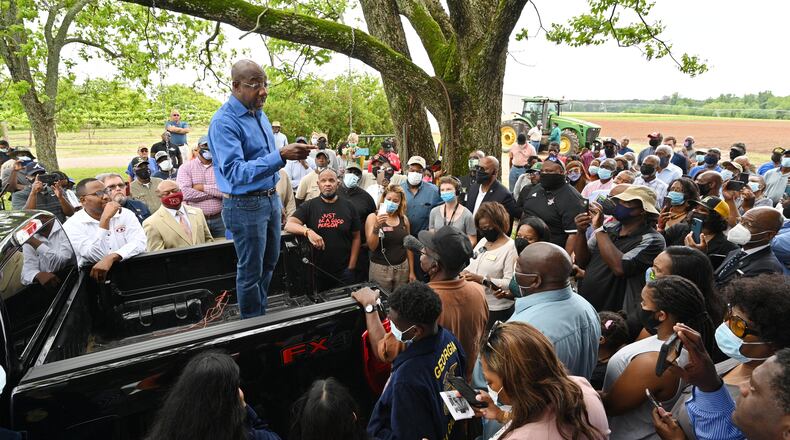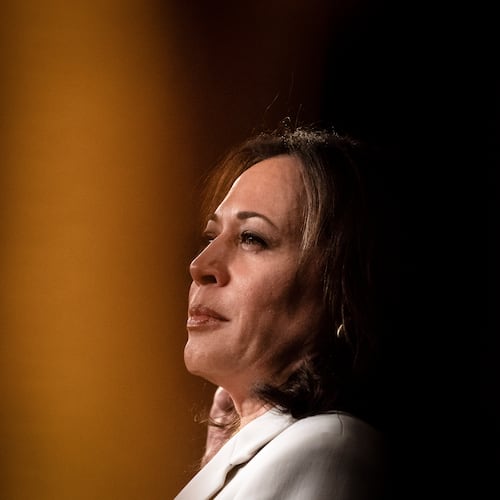The White House’s plan to provide $4 billion in debt relief to Black farmers took a major step forward Friday when the U.S. Department of Agriculture cleared the way for eligible borrowers to receive the payments as early as June.
The debt relief plan was tucked into the $1.9 trillion stimulus package at the urging of Democratic U.S. Sen. Raphael Warnock to help disadvantaged farmers who have faced a legacy of financial discrimination. It’s advancing despite stiff pushback from opponents, including some Republicans in Congress, and skepticism from some Black farmers worried it won’t take effect.
U.S. Agriculture Secretary Tom Vilsack said in an interview that eligible farmers will soon receive notices for payments that will cover up to 120% of outstanding debt. Under the plan, the USDA expects payments to begin in early June and continue on a rolling basis.
“It’s an important first step,” Vilsack said. “It’s reflective of the impact of over 100 years of policies and actions at the Department of Agriculture that have limited people from having opportunities. It acknowledges the disparity presently, and it’s really forward-thinking.”
The program is moving forward despite growing controversy. White farmers have sued the USDA to stop the initiative, claiming reverse discrimination, an opinion echoed by some congressional Republicans, including U.S. Rep. Andrew Clyde of Athens.
Three major banking groups recently complained the government initiative will undercut their profits and risk future loans.
Warnock, who serves on the Senate Agriculture Committee, has touted the program across rural Georgia as a way to combat a tide of historic discrimination, though he’s acknowledged the challenges of effectively distributing the funds and using the program to address broader racial injustices.
In a statement Friday, he said he fulfilled the promise he made to farmers in Byromville earlier this month that “help is on the way.”
“This debt relief is long overdue. And let me be clear: supporting socially disadvantaged farmers in rural Georgia means supporting local jobs and the local economies they are inextricably a part of,” Warnock said. “This announcement is good news that will help keep these families farming and preserve their connection to the land.”
Federal data shows Black farmers last year received a small fraction — about 0.1% — of the coronavirus relief under then-President Donald Trump’s aid package for American farmers. Much of that money went to larger — and predominantly white-owned — operators.
Credit: HYOSUB SHIN / AJC
Credit: HYOSUB SHIN / AJC
More broadly, Democrats hope the measure could help keep more farmers of color in business. Black farmers lost more than 12 million acres of farmland nationally over the past century, officials said. In Georgia, roughly 2,800 Black farmers are still working the land.
About $4 billion in funding will go toward covering outstanding debt for farmers. Much of the remaining $1 billion would pay for new training programs and help historically Black colleges and universities finance research.
The foundation of the program is a racial equity commission tasked with revising USDA policies to bring more fairness and root out discriminatory practices.
While Black farmers at Warnock’s events welcomed the promise of the program, many also expressed doubt the debt relief was coming after decades of struggles navigating the federal bureaucracy. Vilsack vowed to restore their faith in the agency.
“Moving forward, we will devote ourselves to ending discrimination wherever it exists at USDA,” he said, “and working like never before to gain the trust and confidence of America’s farmers and ranchers.”
About the Author
The Latest
Featured




